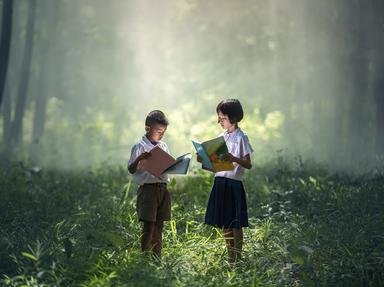Quiz Answer Key and Fun Facts
1. What was the exact title of the book?
2. Which of the characters was inspired by a hardware store window display Baum created?
3. In the book, how old is Dorothy?
4. Who or what saved the Cowardly Lion from the deadly field of poppies?
5. What was Dorothy wearing when she met the Wizard?
6. Why did the Winged Monkeys carry Dorothy and her friends away?
7. Where did Dorothy and her friends go immediately after the Wizard's balloon flew away?
8. Where did the Scarecrow, the Tin Man, and the Cowardly Lion end up?
9. Does the book contain intended political references?
10. Does the shift in the 1939 MGM movie from black and white to color happen in the book?
Source: Author
wylie6
This quiz was reviewed by FunTrivia editor
looney_tunes before going online.
Any errors found in FunTrivia content are routinely corrected through our feedback system.
